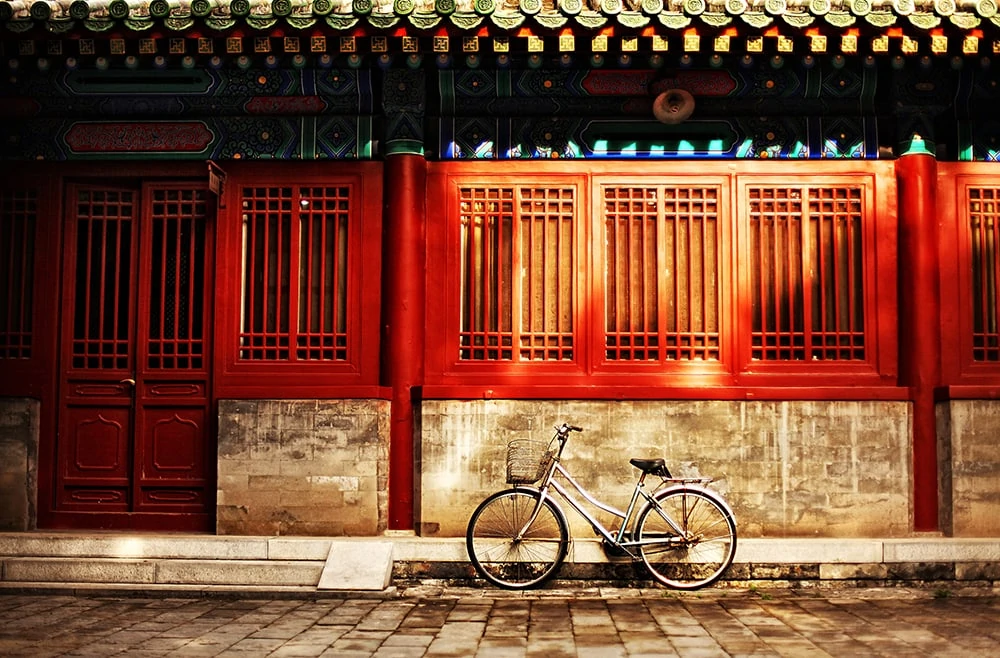A number of Beijing’s most exciting bar and restaurant streets have been bricked up and shut down in recent months. A few pretty streets might appease the authorities but it won’t attract visitors, writes Tom Pattinson
Something strange has been happening in Beijing’s backstreets and alleyways in recent months. Piles of bricks appear by the side of the street – an ominous sign of things to come. After the bricks, comes a team of government workers who remove signs, and board-up businesses. Sometimes an entire street might be bricked up.
The piles of bricks echo pre-Olympic Beijing when the character chai could be found in bold white paint on the side of a building that was earmarked for demolition. The pile of bricks seems to send the same message: if you’re in that area, it’s time to get out.
Bricks have been found in areas around the popular bar district of Sanlitun, the hutong areas north of the National Art Museum of China and north of the Drum and Bell Towers. They close off access to the road, effectively shutting down the businesses behind them. Said businesses are encouraged to relocate or to cease operations entirely.
With its ancient alleys and cultured residences, Beijing is the “soul of China”.
Unlike the pre-Olympic gentrification period that saw the majority of the city’s centuries-old alleyways, or hutongs, demolished, these bricks seem to be targeting areas that house businesses run by outsiders. Many of the restaurants, shops and trades along these side streets are run by migrants from poorer areas of China, namely Hunan and Shandong provinces. Also many are home to bars and venues owned and run by French, American, British and other foreign populations.
The authorities say they will shut down 16,000 unlicensed shops and extensions in Beijing this year. And while some venues have perhaps extended their premises without getting all the permits, most have been operating legitimately, with the correct paperwork, for years. Other innocent shopkeepers are being caught up in the chaos as whole streets are earmarked for renovation and they just happen to be located in the wrong place.
Aside from the official reason for gentrification, people are still left scratching their heads as to why so many comparatively new buildings, housing legitimate businesses, have been targeted. It has been argued there has been a push to make more space for the native Beijing population, who are getting squeezed by the capital’s ever-growing migrant population. Areas that are home to foreign-owned bars have also fallen victim to the “brick-up project”.
The government has recently launched a campaign encouraging locals to tip off authorities about potential spies working in the capital. Could the removal of areas where drunken interactions between foreigners and locals take place be linked to this? Or perhaps the increasingly austere and nationalist authorities are trying to reduce the influence of western-style socialising?
The bricking up of one bar street in Sanlitun famous for its aggressive drug pushers, all night drinking and general debauchery won’t be missed by many. But the sad departure of the roast lamb leg restaurants on Beixinqiao Santiao behind Beijing’s famous Guijie food street? Or the Shandong food stalls that spread across Dafosi Hutong? Or the hipster cafes that dotted Fangjia Hutong?
It is these colourful streets, full of character, which make the city so vibrant. Beijing – like all of China’s cities – has spent much of this century gentrifying its streets in a bid to bring them into the modern age, to clean them up and give a better impression of China to the outside world. But the reason Chinese tourists flock to Brussels, London or Paris is not to ogle clean new buildings. It is to witness street culture, to try out new cafes and to experience the nightlife of these cities.
Future tourists to Beijing might not get to smell the cumin-scented lamb roasting on the street or browse an old brick-a-brac shop down a dusty hutong or have a late-night drink on the roof of a hipster bar. They will leave with the wrong impression of Beijing: that it lacks character.
When people ask me what the difference between Beijing and Shanghai is, I reply that Shanghai – with its tall sparkly buildings – is the “face of China” and Beijing, with its ancient alleys and cultured residences, is the “soul of China”.
But if it continues to brick-up and block out the individualism, the quirks and idiosyncrasies, then it will not only be closing the door to tourism but selling its soul too.


